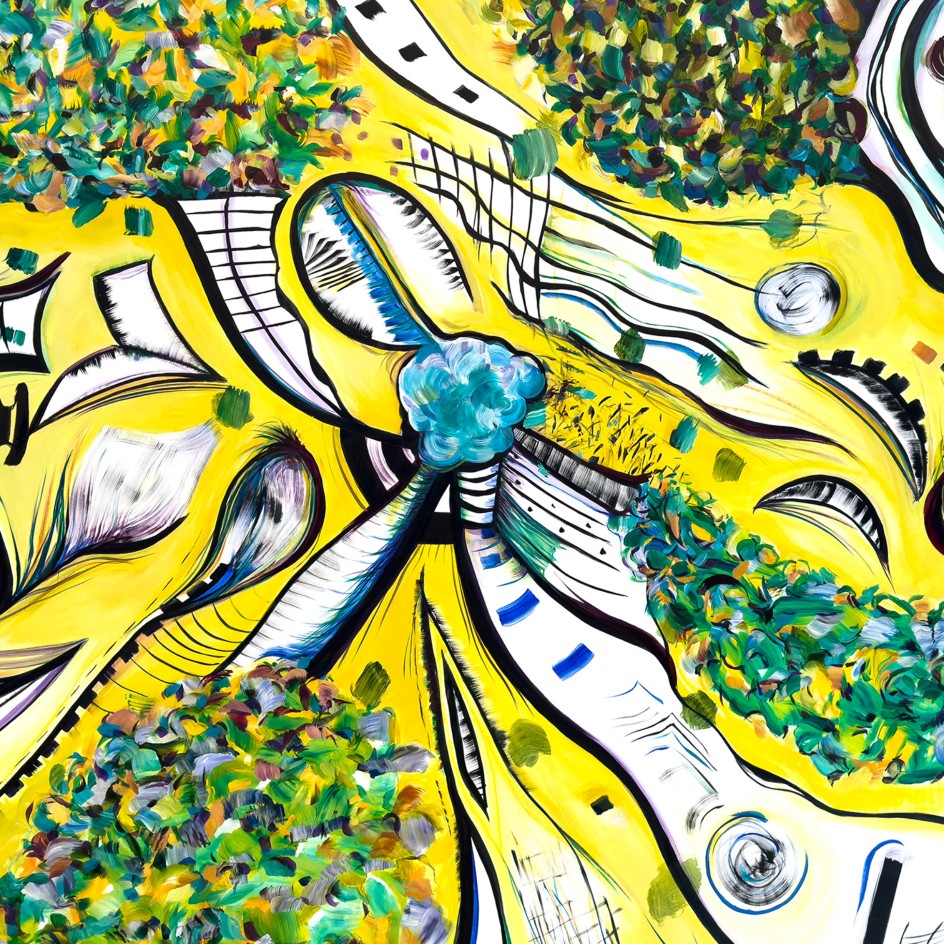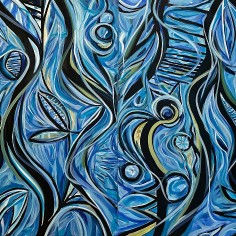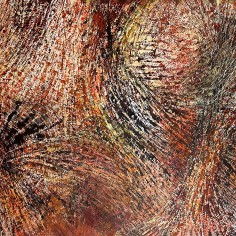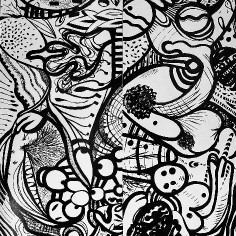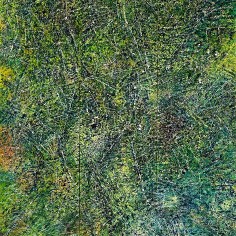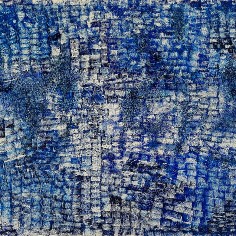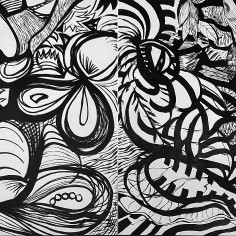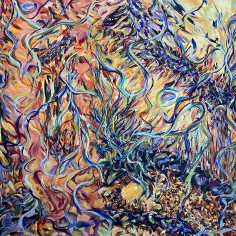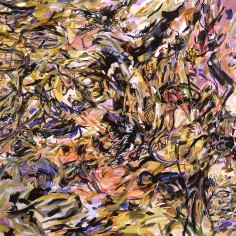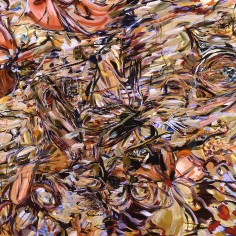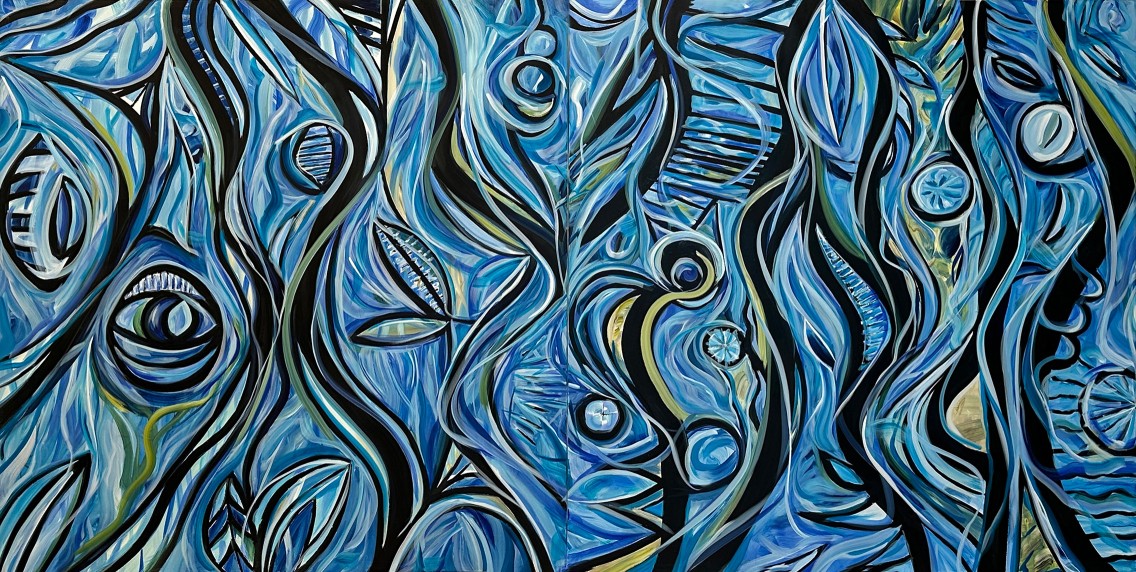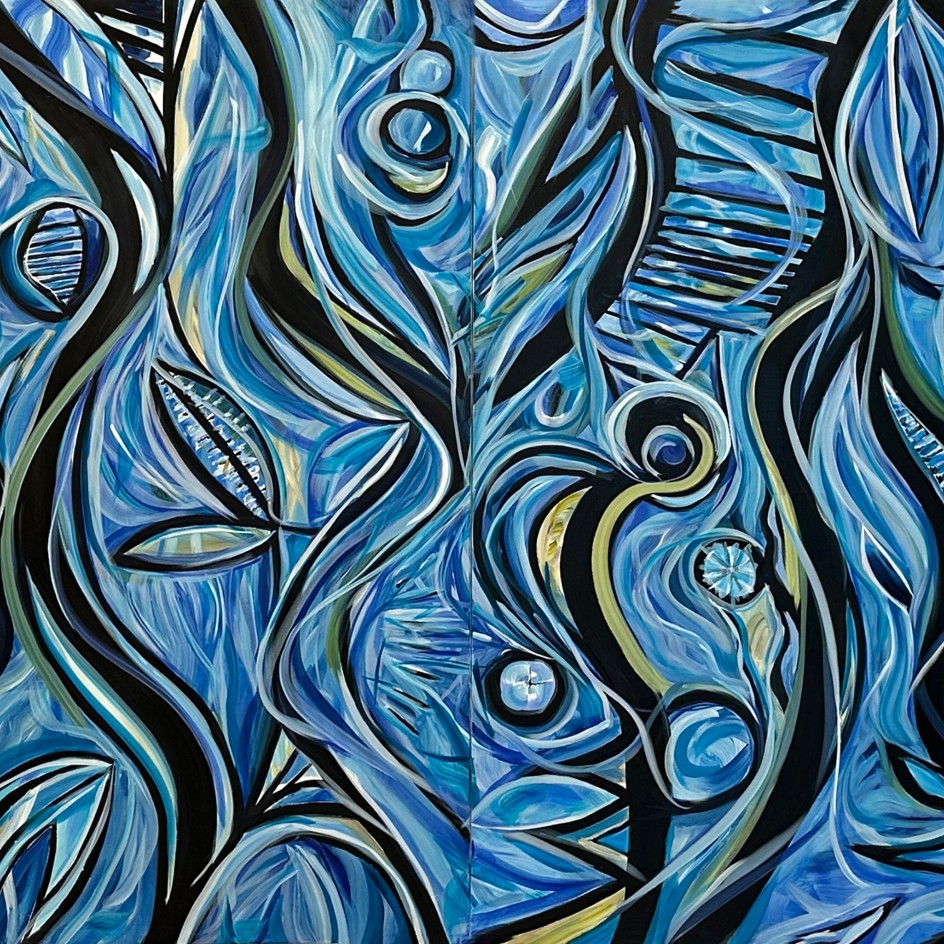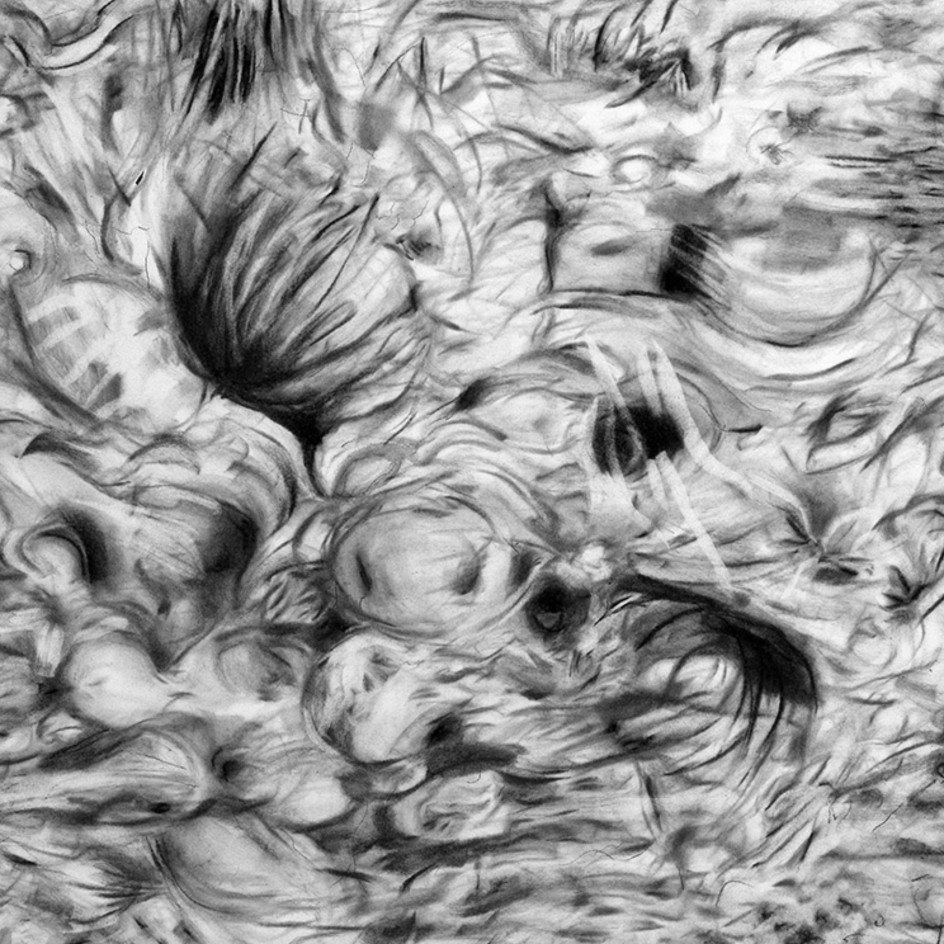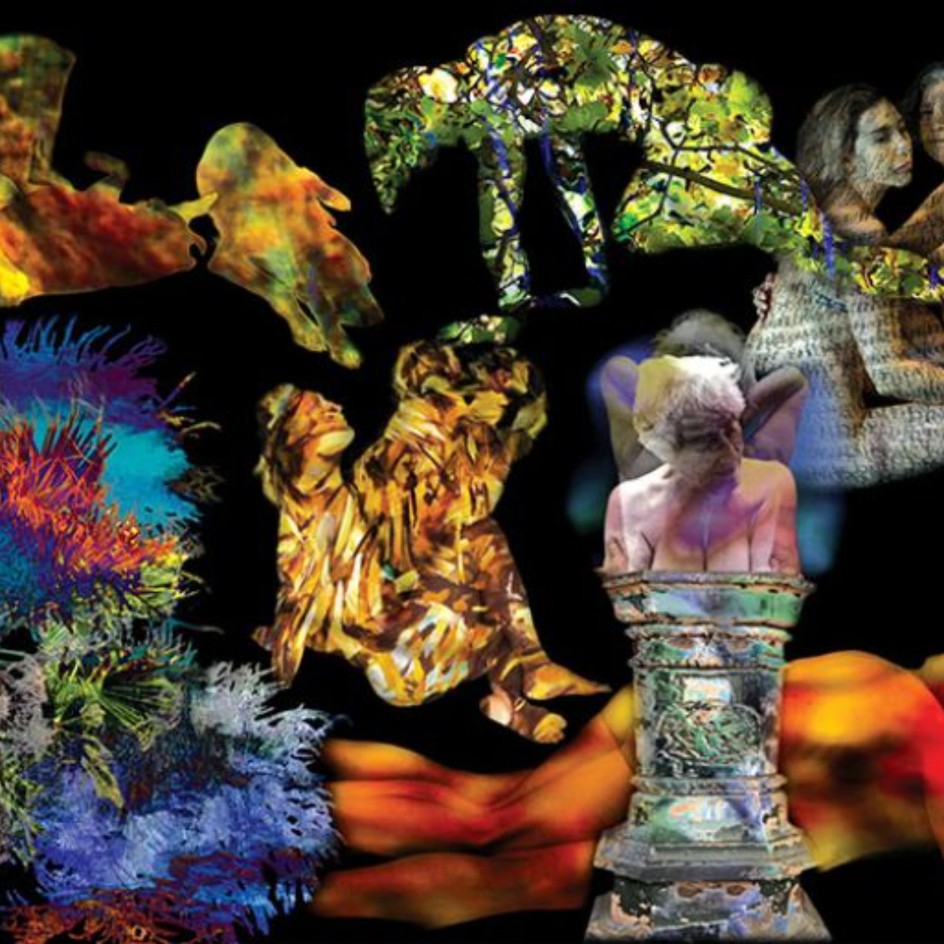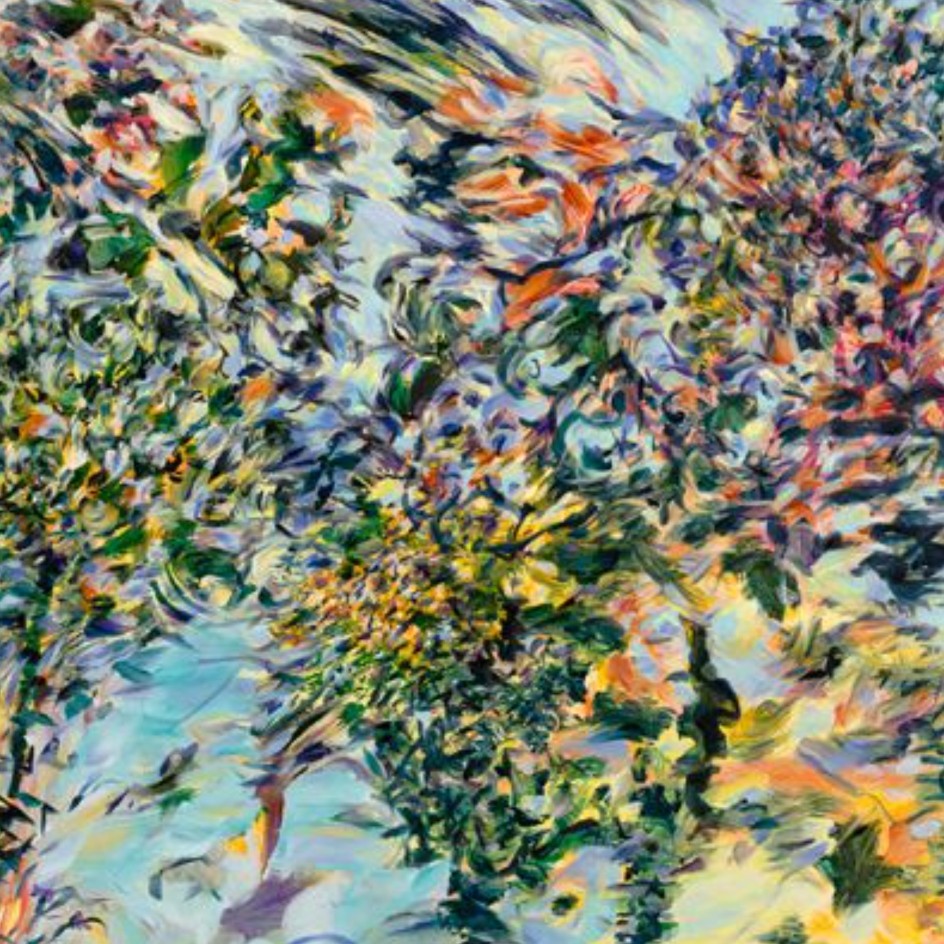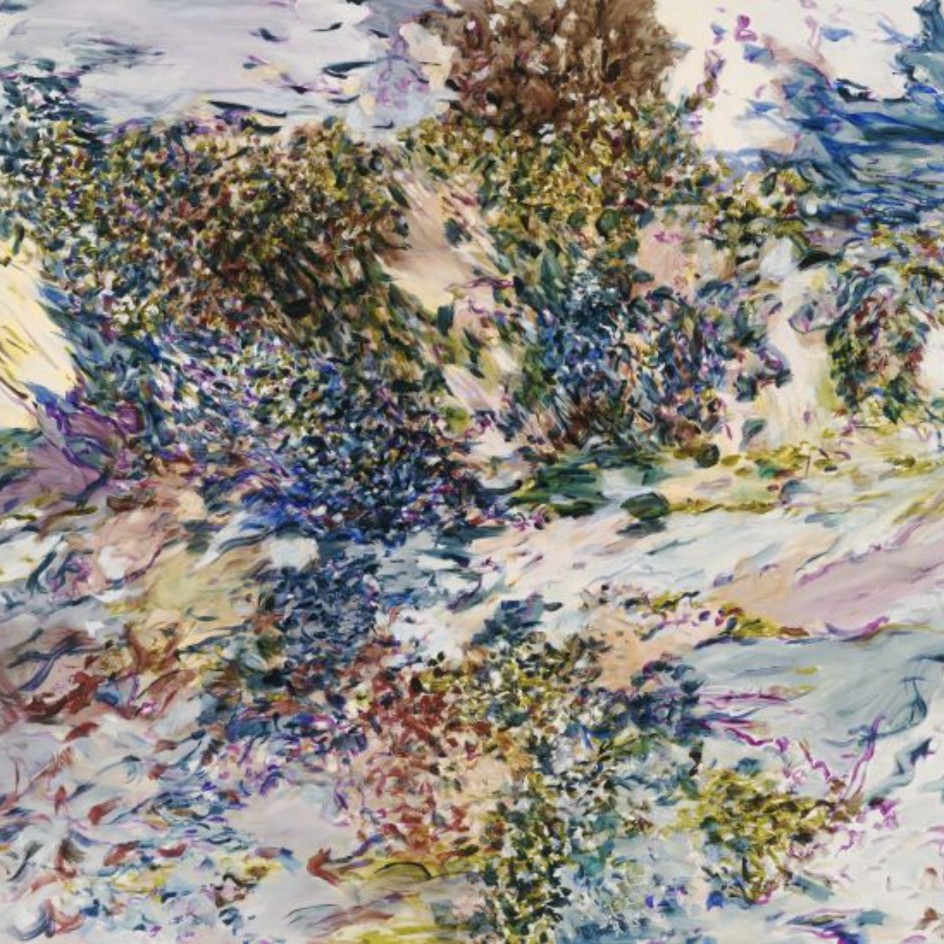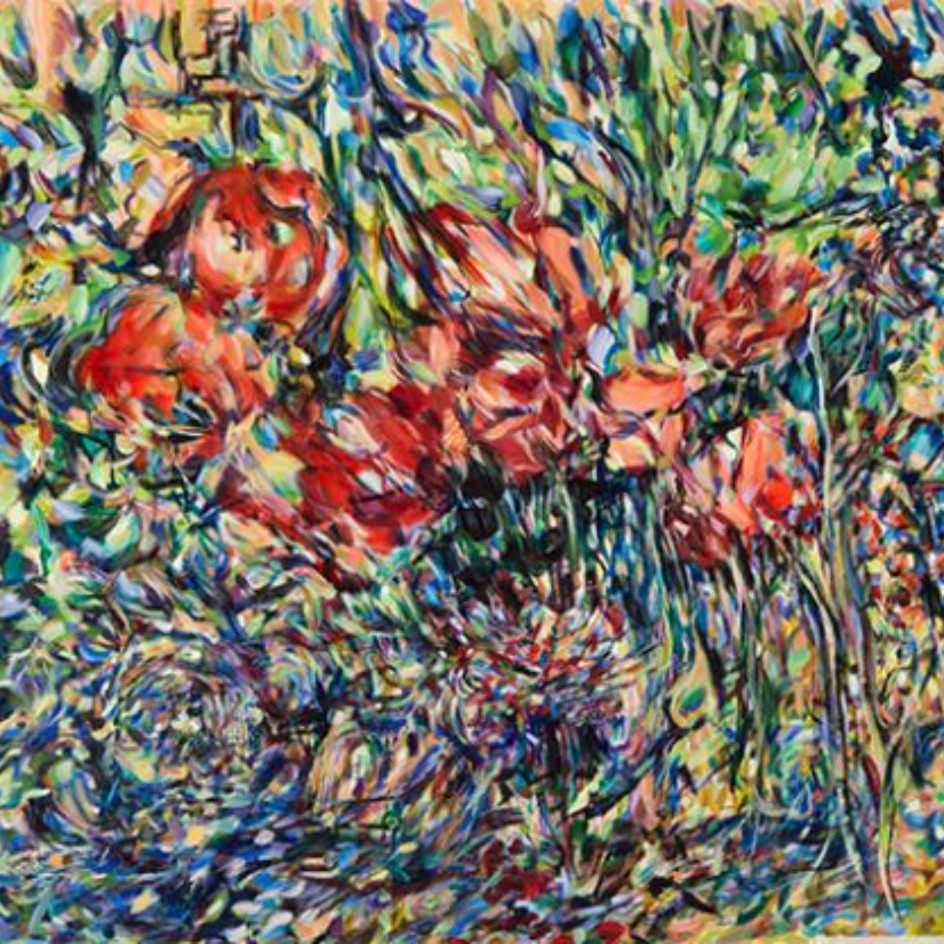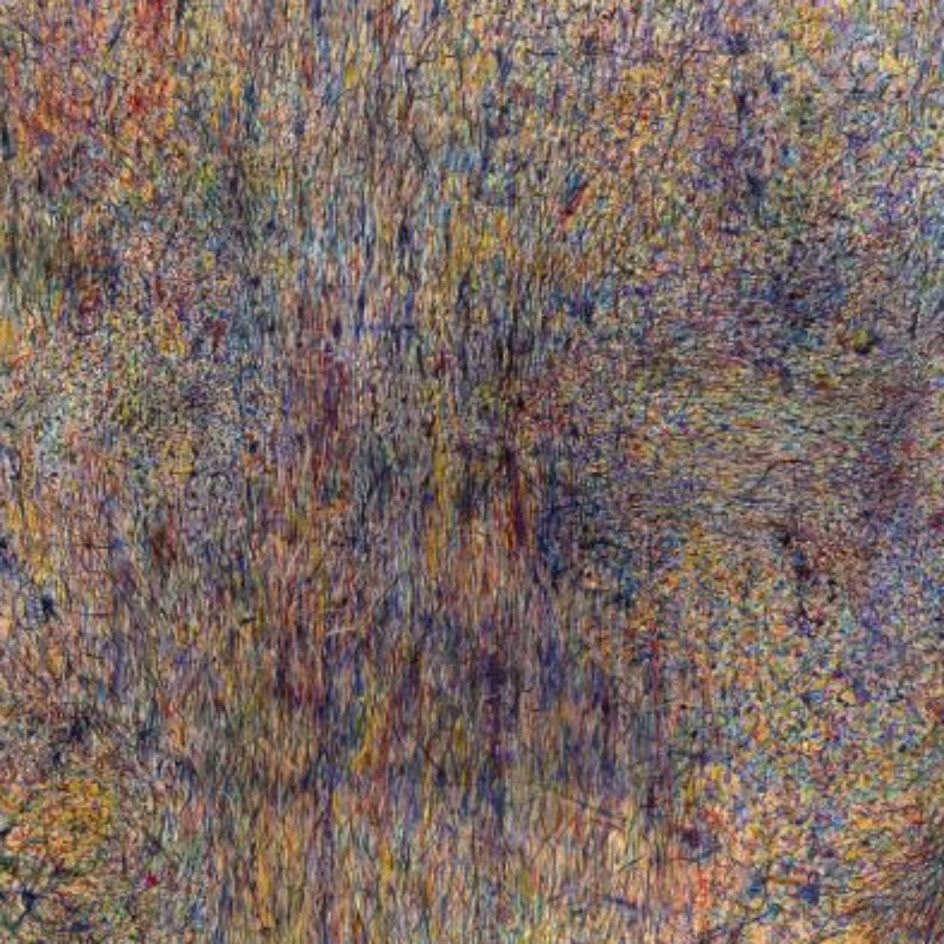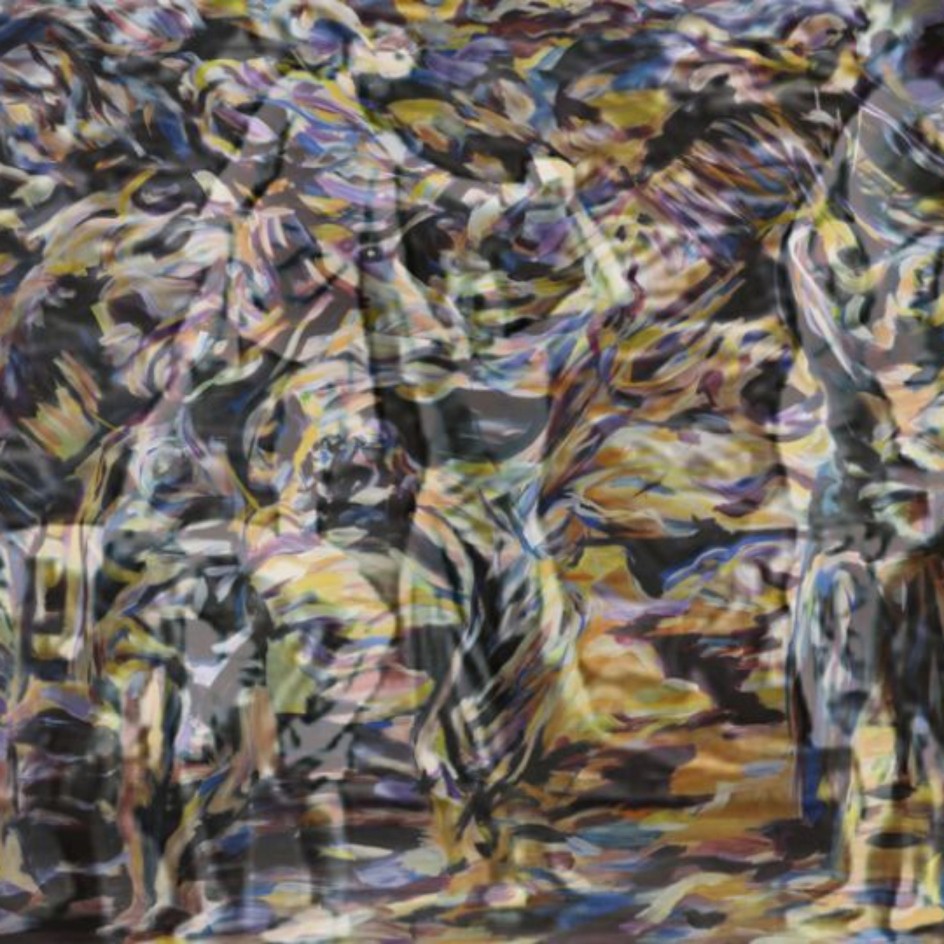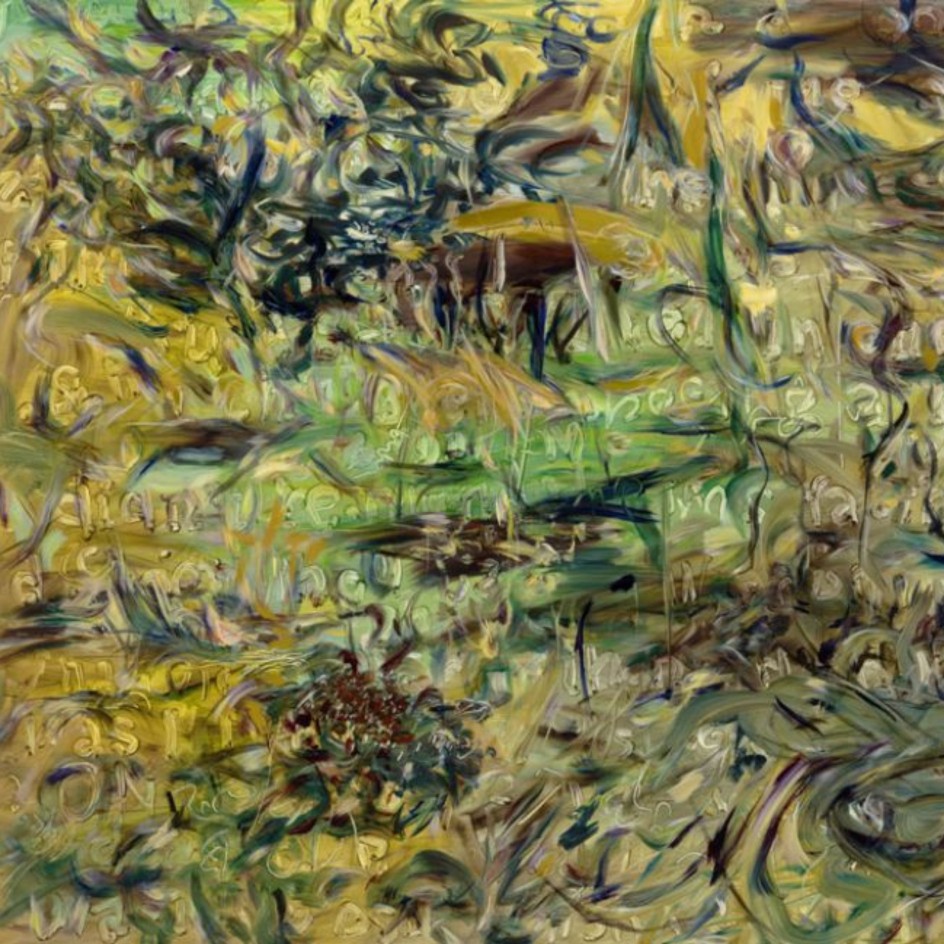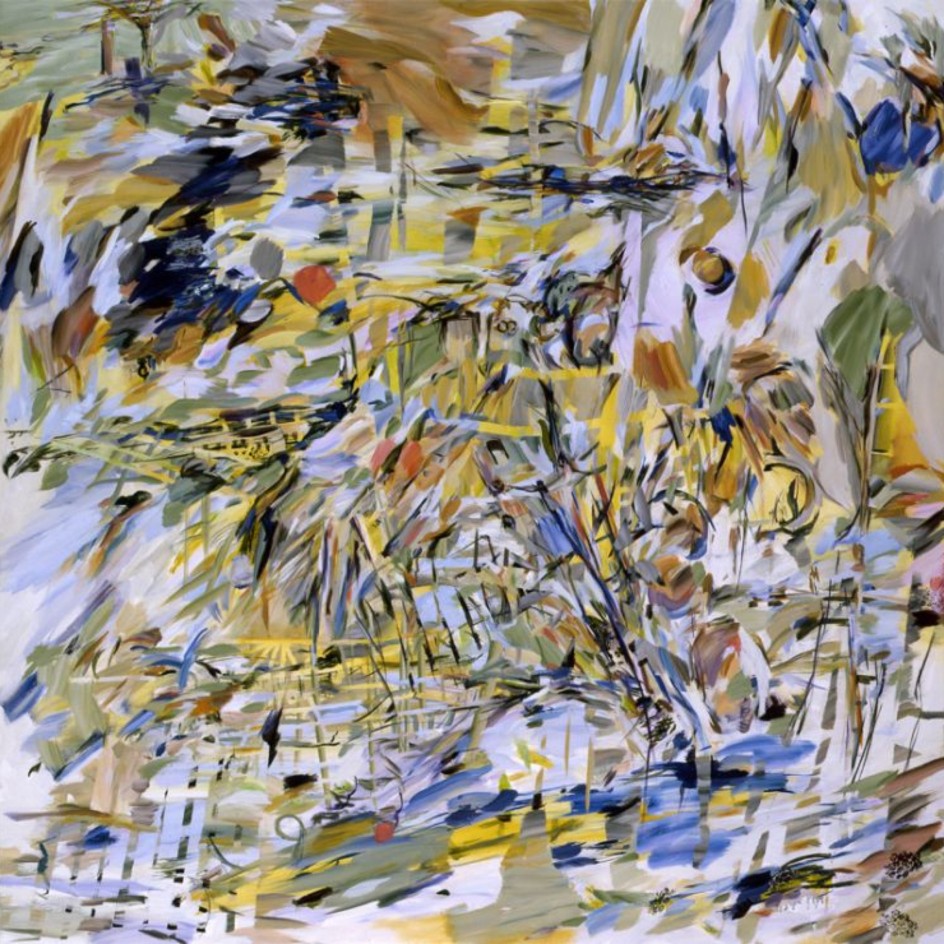Naomie KREMER
Terra
March 16 - May 13, 2023
Reception for the artist Thursday, March 16, 6-8PM
Summary
Many millennia before art was exhibited in galleries and illuminated with track lighting, paintings decorated the walls of caves where they were enlivened by the flickering of torch flames. The fugitive light animated the Ice Age depictions of animals while also rendering their forms ambiguous. Visitors could look at them forever and never see the same picture.
Naomie Kremer achieves an equivalent effect utilizing far newer media. Manipulating photographs of her paintings in video editing software, Kremer projects the moving images onto the canvases, accentuating the internal dynamics of compositions that hover between abstraction and figuration. “Uncertainty is more stimulating than certainty,” she says. “The state of uncertainty is dynamic.”
The dynamics of uncertainty are at the core of Terra, Kremer’s 18th solo exhibition at Modernism Inc. Created during the anxious years of the pandemic, as Kremer was in the midst of moving her studio, these paintings and hybrids manifest her reckoning with instability, and her recognition that the personal and planetary shakeup provided an opportunity for unprecedented creative development.
Although Kremer has been making digital hybrids for more than a decade, animating her paintings with disparate video footage, the pandemic provided her with the context to recognize that the paintings could animate themselves. “In the midst of the confinement of the pandemic I decided to give myself a wide-open space to explore,” she recalls. Isolated from worldly distractions, limited to making art and taking walks in the woods near her home, she became more focused while simultaneously letting her practice grow more expansive. The three hybrid paintings in the Modernism exhibit – two of them animating paintings she created years ago – bear witness to this dual transformation.
The chance discovery of several unused canvases led Kremer in another new direction. Kremer had been making drawings copying odalisques in Picasso’s erotic sketchbooks. Finding the primed surfaces of the canvases to be as smooth as paper, and the creamy color of the primer reminiscent of the sketchbook’s pages, she applied bold lines of black paint, allowing each stroke to determine what came next. “Every mark I make stays, and has to be incorporated into the next move,” she explains, comparing the process to the chain of events involved in creating a Surrealist Exquisite Corpse. Further accentuating the dynamic interplay of construction and decoupling, works such as Inklinks I are assembled as diptychs. “There are ways they connect and ways they don’t,” says Kremer. “Eros, flora, fauna, and saga come together in abstract, suggestive ‘stories’ that surprised me.”
A third new direction for Kremer also derived from moving to a new studio. Ruined old brushes provided her with novel ways of depositing paint on canvas. Soon she found herself exploring the imprints of brushes purchased from the hardware store: scrub brushes and kitchen brushes that she applied to the canvas like printing blocks. “I was trying to get away from the tyranny of the mark,” she says, describing a problem that has bedeviled masters from Henri Matisse to Jackson Pollock. “I love how those cheap brushes remove the need to make a decision about every stroke. It’s liberating, the way the marks make themselves. It provides a starting point for me to go in and negotiate between them with other colors and marks.”
On these canvases, patterns emerge from the concretion of chance events. For example, Teeming turned out to evoke a map of Earth from space. Sometimes, the patterns have more than one valence. Ring Cycle could be interpreted as a representation of tree rings or constellations.
For Kremer, this ambiguity captures a deep truth about reality. “From the galactic to the microscopic, there’s a visual relationship,” she says. “My work always has a fractal quality.” Like her digital hybrids and the cave paintings of Lascaux, Kremer’s works on canvas appear different each time they’re observed.
Press
Naomie KREMER
Naomie Kremer: Drawn In at Modernism
2021-03-06
Naomie KREMER
Naomie Kremer: Embodiment
2020-03-04
Naomie KREMER
Naomie Kremer: Untold Square Cylinder Review
2018-02-27
Naomie KREMER
Naomie Kremer featured in Destinations Magazine
2018-02-14
Naomie KREMER
Naomie Kremer: Untold at Modernism
2018-01-09
Naomie KREMER
Naomie Kremer @ San Jose Institute of Contemporary Art
[Square Cylinder Naomie Kremer]
2015-08-21
Naomie KREMER
REVIEW: Naomie Kremer Tackles Quantum Entanglement
[SciArt in America]
2015-08-13
Naomie KREMER
Naomie Kremer solo exhibition "Age of Entanglement" at the SJICA May 31-Sep 19, 2015
[View the interactive online catalogue]
2015-06-10
Naomie KREMER
Naomie Kremer Multiverse
2011-02-17
Past EXHIBITIONS
Fugues
February 8 - April 4, 2024
